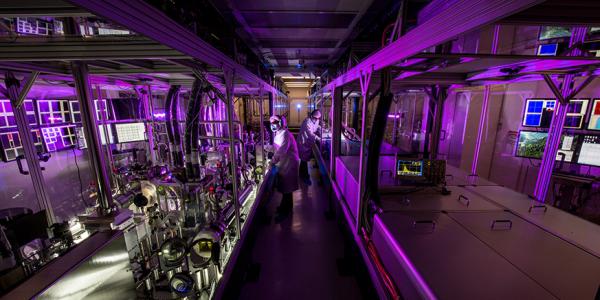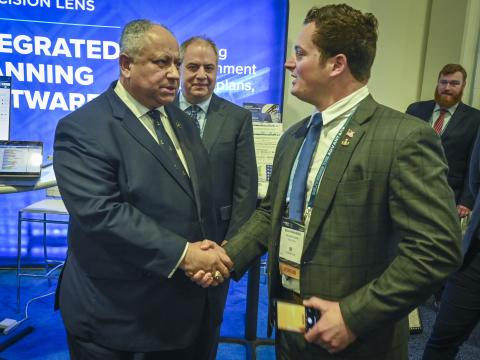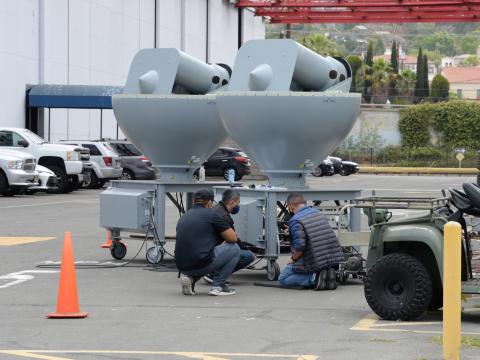Livermore's Advanced Laser System Reaches Major Milestone
The High-Repetition-Rate Advanced Petawatt Laser System (HAPLS) being developed at Lawrence Livermore National Laboratory recently completed a significant milestone: demonstration of continuous operation of an all-diode-pumped, high-energy femtosecond petawatt laser system. The system now is ready for delivery and integration at the European Extreme Light Infrastructure Beamlines (ELI Beamlines) facility project in the Czech Republic, where it will be used for conducting experiments.
In three years, HAPLS went from concept to fully integrated, record-breaking product. HAPLS represents a new generation of application-enabling, diode-pumped, high-energy and high-peak-power laser systems with innovative technologies originating from the Department of Energy’s fusion laser research and development.
In the decades since high-power lasers were introduced, they have illuminated entirely new fields of scientific endeavor and affected society. When petawatt peak power pulses are focused to a high intensity on a target, they generate secondary sources such as electromagnetic radiation or accelerate charged particles. They enable a variety of research areas, including time-resolved proton and X-ray radiography, laboratory astrophysics and other basic science and medical applications for cancer treatments, in addition to national security applications and industrial processes such as nondestructive evaluation of materials and laser fusion.
Until now, proof-of-principle experiments with single-shot lasers provided a glimpse into this arena of transformational applications, but to commercially explore these areas, a high-repetition-rate petawatt laser was needed.
In the coming months, HAPLS will be transferred to ELI Beamlines, where it will be integrated into the facility’s laser beam transport and control systems, then brought up to full design specification—delivery of pulses with peak power exceeding 1 petawatt (quadrillion watts) firing at 10 hertz (Hz), breaking its own record and making it the world’s highest average power petawatt system. ELI plans to make HAPLS available by 2018 to the international science user community to conduct experiments using the laser.




